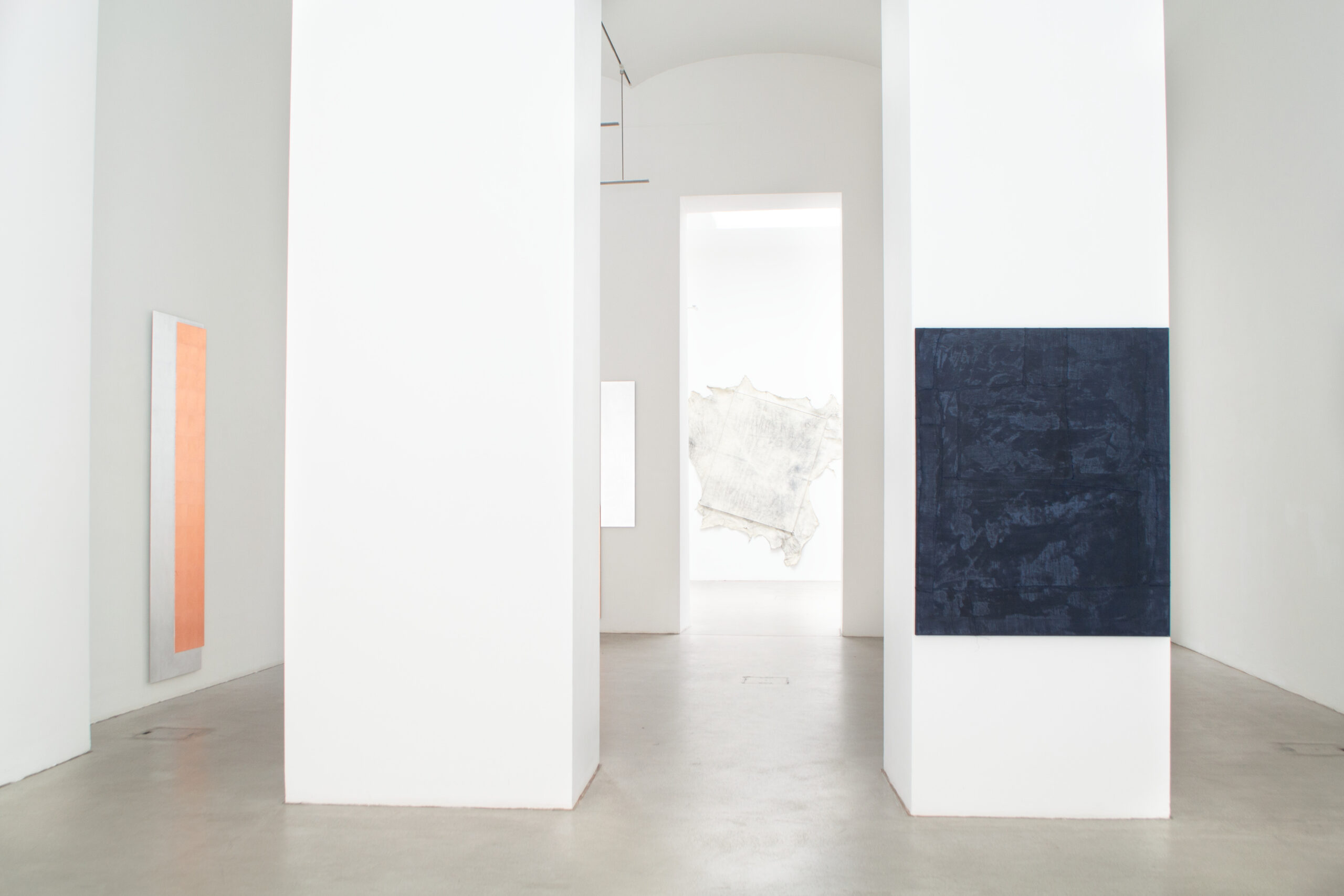SILENT MATTERS
Alberto Burri (1915–1995) is regarded as the creator of paintings made with other materials. Stunned, he processed the traumas of war by allowing various materials to (re-)interact. Today, the increasing digitalization of everyday life is contributing significantly to the suppression of the fundamental autonomous power of the physical realm. The desire for a reality that is easy to handle comes to nought. Contemporary art is responding to these developments with an increasing awareness of the aesthetic qualities of materials. Is there a return to Alberto Burri under different circumstances?
In Silent Matters, Galerie Raum mit Licht shows four artists’ work that lend visual expression to the silent events of the material world.
Works of canvas, leather and metal are on display. At first glance, their purpose defies clear definition. So they oscillate between pictures and installations, or exude the suggestion of a foreign body. The life that reveals itself on their surfaces has not yet been told as a story. Concrete references remain open, questions are raised: What asserts itself as a massive outer profile, what presents itself as an inner or rear side, what opens up as a side of the face capable of dialogue, as an ephemeral projection surface that can be played on, what proves itself as storage for light phenomena or even dissolves into a hermetic reflection? To what extent do these surfaces define boundaries, exclude, cover, seal, or were once grown together with a living body (as the most sensitive of all sensory organs)? Did these surface materials develop organically? Have they been cut out, pieced together, detached or become brittle in the process of hardening? And furthermore, how is time stored in them? As the traces of touch, as scars, as a patina or as decay?
The poetic spaces that can unfold in encounters with the concrete realm of materials can be forgotten under the dictates of seemingly ageless, uniform monitors. The last work in the show is the film “Il Cretto” by Aglaia Konrad (2018). Slowly and without sound, the camera’s view closes in on the white concrete ceiling that Alberto Burri had covered the ruins with from the earthquake at Gibellina in 1984-1989. It was not until 2015 that his work was posthumously completed. Today, the first cracks have appeared in the cement and nature is encroaching. Aglaia Konrad uses the projection to show what it is that Alberto Burri had wanted to show. The story that materials relate bears testimony to the constraints of time. It is never finished. Language, however, eventually runs out.
